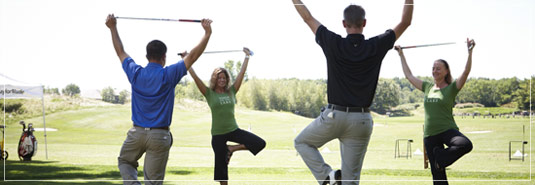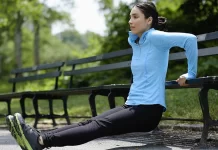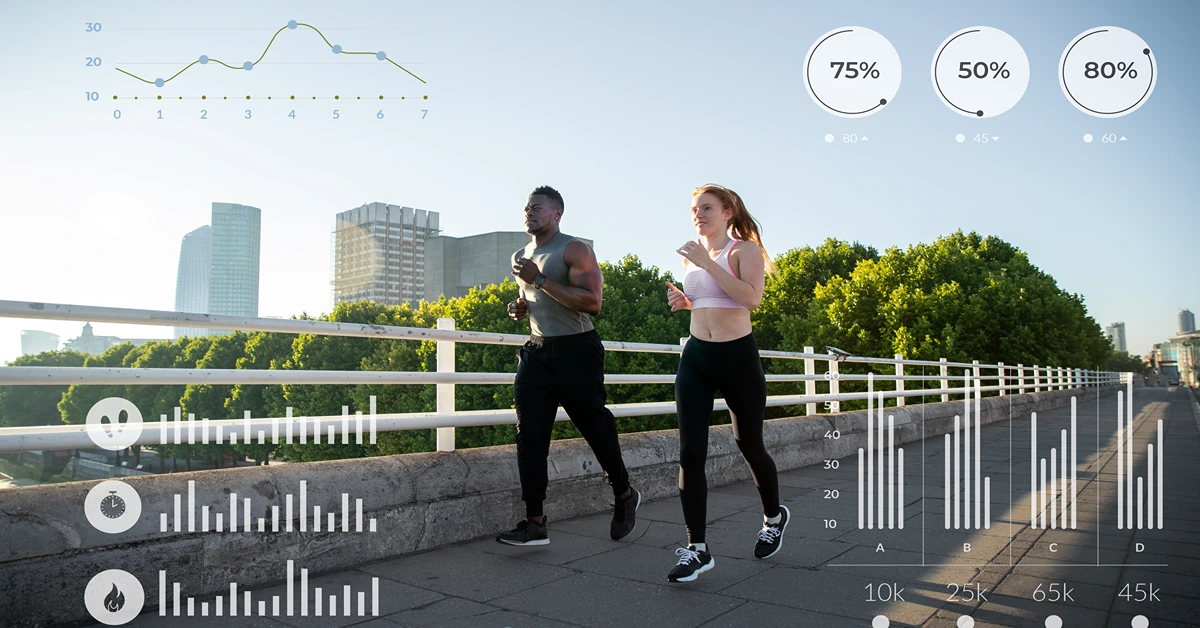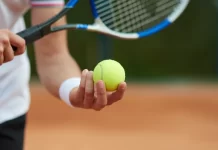Golf conditioning improves performance and decreases risk of injury. Learn strength-training and flexibility exercises you can do at home and on the golf course.
Warm-Up Before Teeing Off
A proper warm-up consists of exercises to increase blood circulation in the golfing muscles as well as stretches for these muscles. Pre-game stretching reduces the chance of injury and improves performance (pre-stretched muscles can exert more force than non-stretched muscles). What pre-game stretching won’t do is increase body temperature. Since cold muscles and tendons are more prone to injury than properly warmed-up ones, stretching should follow 5 minutes of light exercise.
Exercises that increase blood circulation in the golfing muscles:
-
Walk around or in place
-
Step Sideways Right foot out and back, left foot out and back.
-
Arm Swings Keep arms straight as you slowly cross arms in front, spreading shoulder blades apart, then slowly swing arms out to the side while squeezing shoulder blades together.
-
Arm Circles Keep arms straight as you slowly circle left arm up, back, then down. Repeat on right arm.
-
Partial Squats Stand with feet hip-width apart and hands on hips. Bend from the hips and slowly sit back. Don’t go lower than about 10 inches. Make sure your knees don’t go past your toes!
Stretches that increase flexibility in the golfing muscles:
To stretch properly, go slowly and gently to the point of mild tension. Hold each stretch for 10-30 seconds–no bouncing! Perform a stretch for the same length of time on each arm or leg. To relieve sore or tight muscles, stretch after your game as well as before.
-
Low Back Sit with good posture on a bench or golf cart seat. Slowly turn to your right to a point of mild tension. If it’s comfortable to do so, grab the back of your seat. Keep feet on floor. Hold, then repeat on left side.
-
Hip Sit and cross right leg over left with right ankle resting on left knee. Keep back straight as you lean forward to a comfortable position. Hold, then repeat on left hip.
-
Hamstring Extend left leg with knee straight on a bench or golf cart seat. Keep back straight and chin up as you slowly reach toward toes. Hold, then repeat on right leg.
-
Shoulders and Arms Grip head of golf club with right hand and extend it behind your head, letting the club hang vertically. Reach up with the left hand and grab the club as far up the shaft as you comfortably can. Gently pull down with your left hand until you feel a mild stretch in your right shoulder. Hold, then repeat on left shoulder.
-
Chest and Shoulders Standing with good posture, hold a golf club horizontally behind your back with both hands, palms facing out. Slowly raise your arms until you feel a mild stretch in your chest and shoulders. Keep upright–don’t lean forward.
-
Side Bend Standing with good posture and feet shoulder-width apart, hold club horizontally above your head with both hands. Slowly lean to the right until you feel a mild stretch along the left side of your trunk. Hold, then repeat on opposite side.
For prolonged improvement in flexibility, you should stretch after your strength-training workout or other exercise, when your connective tissue and muscles are thoroughly warmed up. Another good time to stretch is after a hot bath or shower.
These stretches and more are included in the Sports Fitkit for Golf. The kit is a safe, simple, effective, and time-efficient method of golf conditioning at home, the office or while traveling. Included in the kit is a bag tag with illustrations of warm-up exercises and stretches. It’s an easy way to remember to warm-up before teeing off!
Note: Although moderate strength training and stretching is very safe, if you are 35 or older or have a medical condition or previous injury, you should check with your doctor before starting any exercise program.
Your golf game can be improved by following a strength-training and flexibility program. Although it was once believed that strength training would develop bulky, tight muscles that would hinder the golf swing, research and the large number of pros who strength train have dispelled this myth. By conditioning the muscles used in golf you can:
-
increase your club head speed and driving distance
-
increase your muscle endurance
-
decrease your risk of injuries related to playing golf
-
increase your enjoyment of the game
During the golf swing, the body acts like a whip. Power production starts with the feet pushing against the ground, then travels up the legs to drive the hips forward. The force is transferred through the trunk to the chest and upper back, then to the arms, which move the club through its arching pathway. Like a whip, if one link in the sequence is weak or stiff, power will be lost. The body will have to reinitiate power after the point of disruption, which is not only inefficient but can also cause injury.
Research that measures muscle activity during the golf swing tells us that many muscle groups are involved and some are more active than others. The large muscle groups in the body (buttocks, legs, chest and back) contribute the most force. Contrary to popular belief, the deltoid muscles (top of shoulder) are relatively inactive compared to the rotator cuff muscles (stabilize the shoulder) which are very active during the golf swing.
Golfing Muscles:
-
front of thigh (quadriceps)
-
back of thigh (hamstrings)
-
outer thigh or hips (abductors)
-
inner thigh (adductors)
-
buttocks (gluteals)
-
sides of abdomen (internal and external obliques)
-
low back (erectors)
-
mid/upper back (latissimus dorsi, rhomboids, trapezius)
-
chest (pectorals)
-
shoulder (deltoids)
-
rotator cuff (infraspinatus, terses minor, subscapularis, supraspinatus)
-
back of arm (triceps)
-
front of arm (biceps)
-
forearm (forearm flexors and extensors)
If you are a member of a health club or gym, you can ask a personal trainer to set you up on a golf-specific program. Otherwise, ask to be shown torso rotation, rotator cuff, and forearm exercises to add to your general conditioning program. If you prefer to workout at home you can use machines, free weights (barbells and dumbbells) or elastic resistance (rubber tubing and bands). The Sports FitKit for Golf contains an effective, golf-specific strength and flexibility program using rubber tubing. You can even use your own body weight for strength training. Here are two exercises that require no equipment:
Squat (front and back of thigh, buttocks) Stand in front of a chair, with feet hip-width apart and feet pointing straight ahead. With hands on hips, bend knees and slowly sit back and return to starting position. Beginner: Sit down in chair. Advanced: Buttocks touch edge of chair. Injury Prevention Tips:
-
Don’t let your knees bend past your toes–the farther back you sit, the less your knees have to bend.
-
Maintain good posture–bend from the hips, not the waist.
-
Inhale when you sit down, exhale when you get up–don’t hold your breath!
Push-Ups (chest, front of shoulder, back of arm) Balance weight between hands and toes, with legs together and hands placed slightly wider than shoulder width. Keeping body straight, slowly lower chest and stop when your arms are 90 degrees at the elbows. Push up without sagging in the midsection or letting the head drop. Don’t lock elbows and don’t hold your breath. Beginner: Bend knees and work off them instead of the feet. Advanced: Elevate your feet 1-3 ft.
Note: Although moderate strength training and stretching is very safe, if you are 35 or older or have a medical condition or previous injury, you should check with your doctor before starting any exercise program.
Guidelines for a Healthy Low Back
Your back needs to be in top form to withstand the forces placed on it during the golf swing. Follow these guidelines to protect your back and keep you in the game.
Maintain proper alignment of the body. Poor posture throws the back out of alignment and can strain muscles and connective tissue. Proper posture consists of a slight bending of the knees, using the abdominal muscles to point the tailbone toward the floor, slightly squeezing your shoulder blades together to keep your shoulders back, and lifting your head up so it’s balanced on your neck. Think of a string attached to your head which is being pulled upward. This allows the natural, gentle curves of the spine to be maintained–not too flexed or too arched.
Maintain proper body weight. Excess weight in the midsection puts extra force on the back which can strain muscles and connective tissue. You only have to remember four words, “Eat less, exercise more.”
Maintain a strong and flexible back by following trunk stretching and strengthening exercises, like those found in the Sports FitKit for Golf.
Reduce stress. Your back is sensitive to the muscle tension created during a stress-filled day. Learn to manage your stress and take time for relaxing activities.
Perform good body mechanics. To protect your back:
- Bend with your knees, not your back when teeing the ball, picking up clubs, etc.
- Avoid excessive forward bending of the back while driving or putting.
- Always use proper lifting form. Improper lifting adds extra pressure to the back.
- When loading and unloading your bag from the car:
| – bend your knees | – contract your abdominal muscles |
| – keep your back upright | – keep the bag close to your body |
| – lift with your legs | – don’t twist your torso |
Warm up before playing golf. A proper warm-up consists of exercises to increase blood circulation in the golfing muscles, plus stretches for these muscles. Pre-game stretching reduces the chance of injury and improves performance (pre-stretched muscles can exert more force than non-stretched muscles). What pre-game stretching won’t do is increase body temperature. Since cold muscles and tendons are more prone to injury than properly warmed-up ones, stretching should follow 5 minutes of light exercise.






